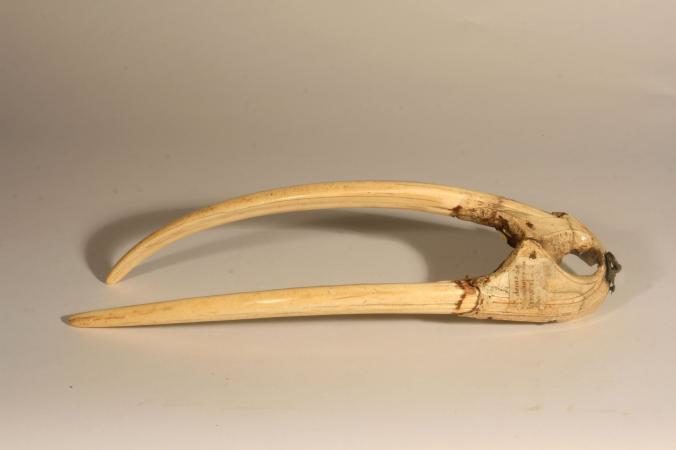
The Norse communities farmed and fished. But a new study suggests that they had another valuable source of support: trading valuable walrus ivory with an avid European market.
Walrus ivory was popular in early medieval Europe, prized as an exotic material from the far-flung north. Churches were decorated with tusks, and elaborately carved chessman played their way across the boards of the elite. But until now, researchers were unsure where exactly the ivory was being sourced from: the icy eastern waters of Scandinavia, or the remote western reaches of Greenland?
The study relies on the fact that walruses from Iceland and Scandinavia are slightly gentically different than walruses from Greenland and Canada. Scientists tracked down walrus tusks, bones, and objects fashioned from their ivory from museum collections around Europe, and analyzed their ancient DNA to pinpoint the original sources of the treasured material.
What they found was striking. Before the 1100s, just a century after the legendary Viking Erik the Red is traditionally believed to have settled Greenland, basically all of the walrus tusks in the European collections most likely came from points east-the Barents Sea, Iceland, or Svalbard. But for the next few hundred years, until around 1400, the source shifted west, suggesting that Norse Greenlanders had a lock on the walrus ivory trade to Europe.
Bastiaan Star, an ancient DNA expert at the University of Oslo and the lead author of the study, says that this geographical shift in walrus ivory sourcing comes as "quite a surprise."
"Is this because the eastern [walrus populations] that were accessible to Europeans were already exterminated?" he asks. "Or somehow, that the socioeconomics of traveling from Greenland to Europe were so cheap that it was possible for them to create trade monopoly?"
Benefits-and perils-of globalization
Life on Greenland's chilly fringes was a constant challenge, explains Jette Arneborg, an expert on Norse Greenlanders at the National Museum of Denmark who was not involved in the study. Norse colonists lacked many things they needed to survive-so they must have relied heavily upon trading with their southern neighbors to fill the gaps.
"If they wanted to survive in Greenland, they actually had to trade, because there were items they just couldn't get-like raw materials such as iron," Arneborg says. "So from day one they needed something to trade-and we of course suspected it was the walrus tusks that were their main trade items."
But by the mid-1400s, the Norse Greenlandic communities were slipping away, ravaged by changing climate and rising seas that flooded out their scant farmland. Some archeologists think that the Norse Greenlandic might have lost trading contact with Norway, one of their key trading partners.
"The population of the Norse settlements was dependent on the walrus trade," says Arneborg, and she thinks that it was very likely that "when they lost contact with Europe and couldn't trade anymore, they got a problem."
"It's an early record, I think, of globalization," says Star, "whereby you have demand from Europe already having an impact in the remote Arctic region, thousands of kilometers away, hundreds or thousands of years ago."



qaanaaq, carnac, karnak and kornark are four sites whose name means Angles of the sun.
after the cometry impact of 7500 years ago, that devestated the atlantic basin, and wiped out the recovery after the younger Dryas it was needed to discover if the Earths orbit was stable. Possibly they needed to prove how much crustal displacement had taken place.
You read it here first.
Understand, Toth, Ptah, or Hermes trimagistius was not a myth.